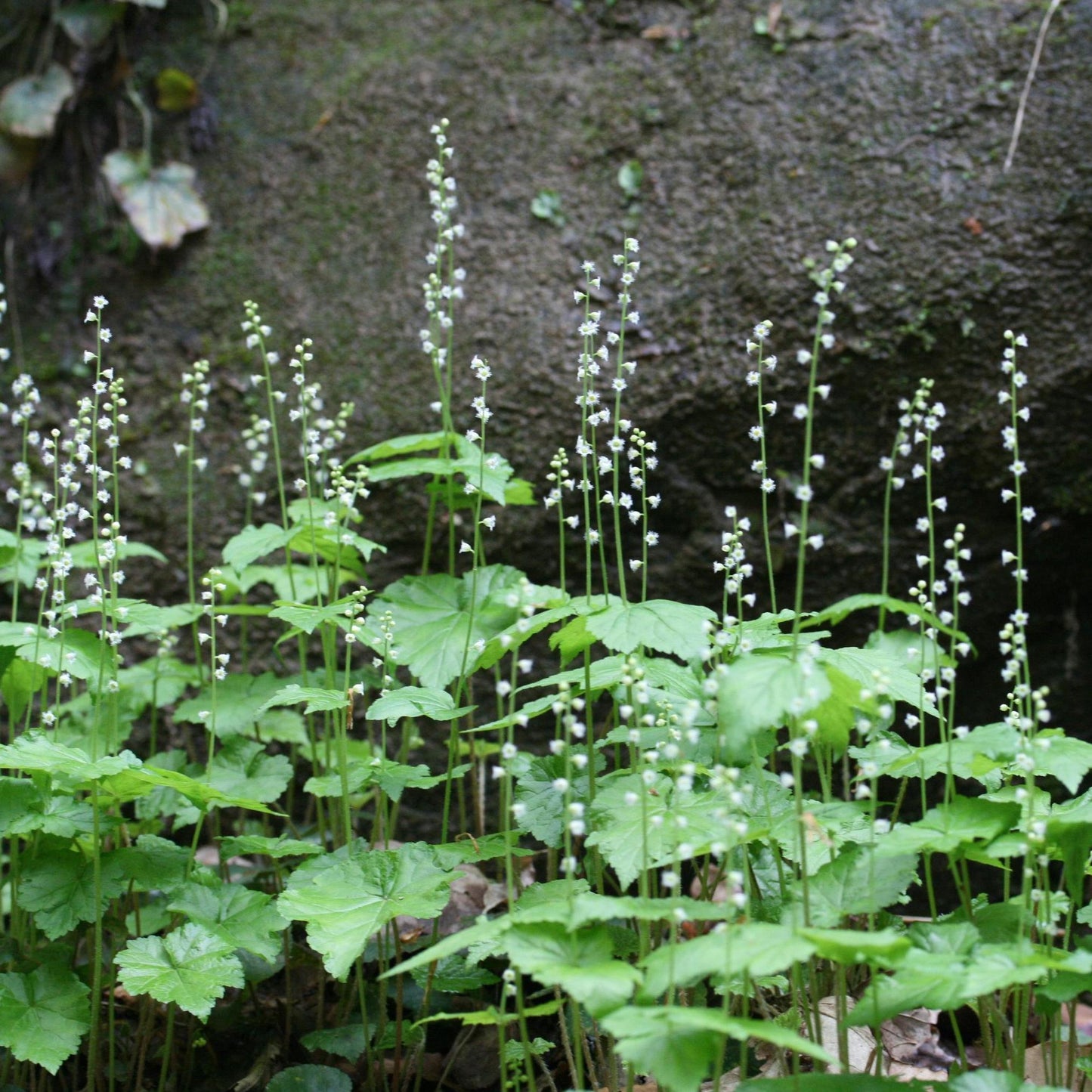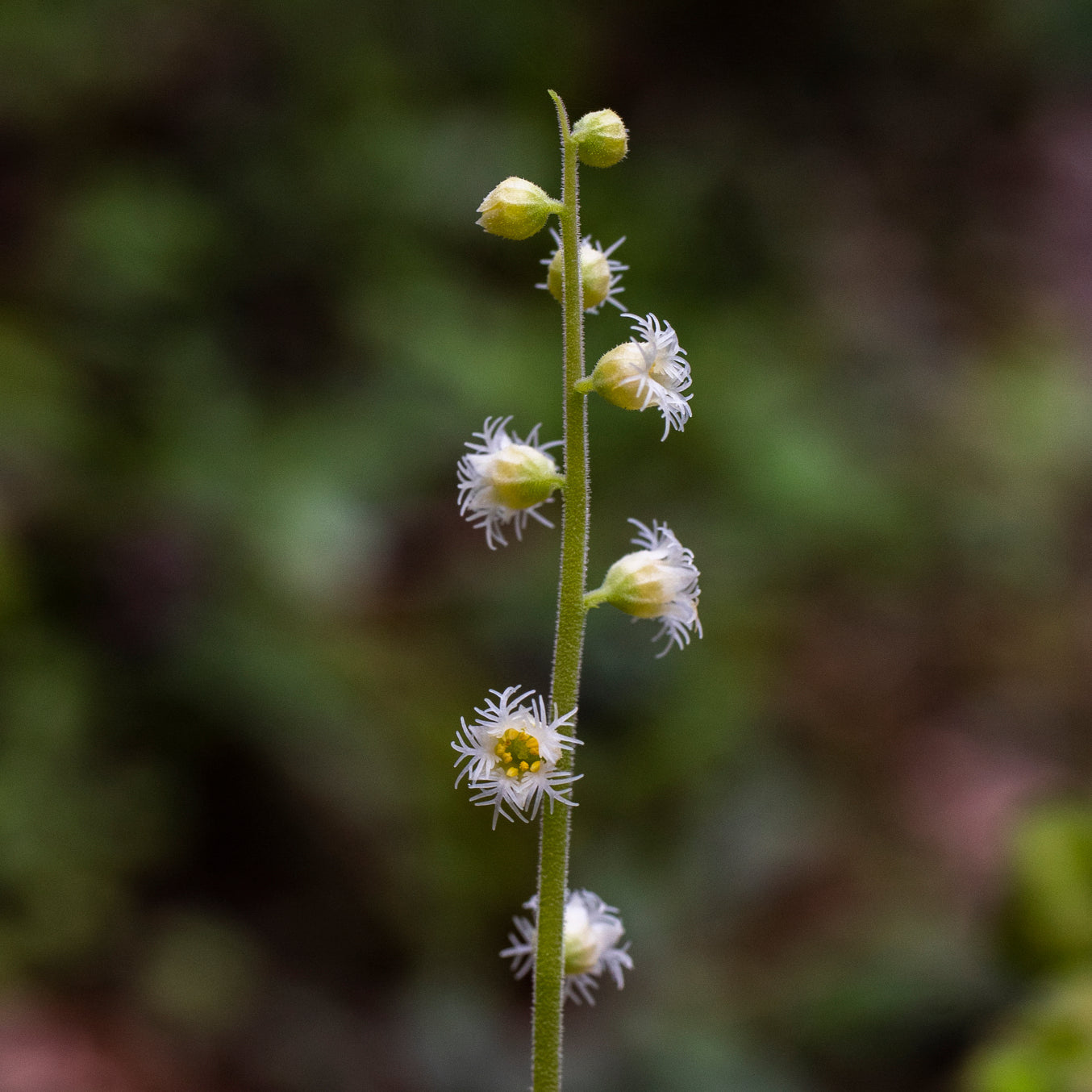Bishop's cap
Mitella diphylla
Mitella diphylla
Couldn't load pickup availability
Sun/shade: Part to full shade
Soil moisture: Medium
Height: 1'
Flowering period: May
Deer resistance: Medium
Resembling a trail of snowflakes drifting down to the forest floor, bishop's cap's fringed white flowers line its central stem. Soon, falling raindrops disperse the plant’s seeds from small cups that take the place of the blooms. When a raindrop strikes one of the seed cups, the impact tosses the seeds up to a meter. This is called splash-cup dispersal, and it is a technique that is also employed by some fungi and liverworts but is quite rare among vascular plants.
Native to NE Ohio forests, bishop's cap especially favors slopes and ravines, where it grows in moist but well-drained soil that is high in organic matter. In the garden, bishop's cap does best in partial shade and soils of average moisture, but it can tolerate full shade and somewhat drier soils. To mimic bishop cap's natural environment, plant it beneath trees that shed their leaves in the fall. Allowing a layer of leaf litter to persist on the ground is also a good idea, both for aiding the soil conditions that bishop's cap likes and also for providing habitat to beneficial insects.
With its delicate beauty and low-growing, maple-like foliage, bishop's cap is a charming addition to formal as well as naturalized shade gardens. Due to its small size and the fine detail of its bloom, bishop's cap is well suited for the garden edge, where it can be viewed up-close. In the company of other spring flowers like Jacob’s ladder, wild geranium, and foamflower, bishop's cap adds its own characteristic intricacy and fascination. Bishop's cap is not an aggressive plant, spreading primarily via short rhizomes to form a small colony.
In terms of wildlife value, bishop's cap is a nice early-season source of pollen and nectar to small pollinators. The plant’s petite flowers don’t provide landing space for larger visitors, but little bees and flies have no problem perching on the filamentous petals. This is a welcome scenario for these pollinators, because it means they don’t have to vie with larger competitors for bishop's cap's floral resources. The most frequent visitors to bishop's cap are small sweat bees, hover flies, tachinid flies, and vinegar flies.
Photo 1 © Chris Evans, used with permission. Photo 2 by Ashley Keesling.



